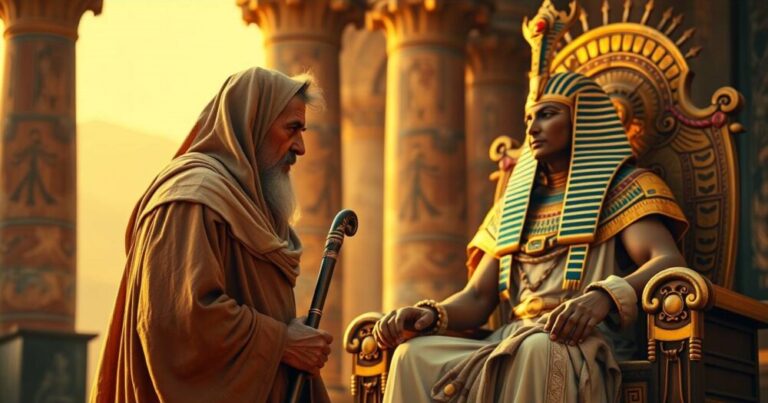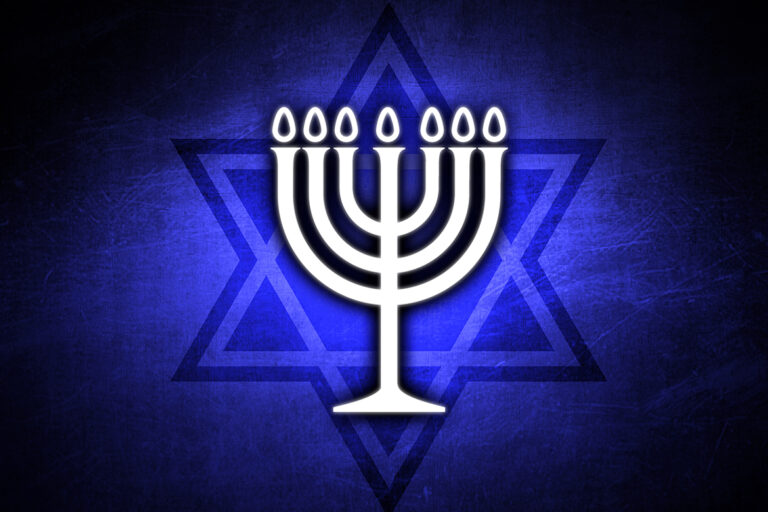The Double-Edged Sword of Gevurah

As is known, ‘left’, ‘right’ and ‘middle’ aspects exist in the structure of the Supernal Lights, i.e. the sefirot in the world of Atzilut. The right side descends from chochmah ('wisdom') and is dominated by chesed (loving-kindness, giving), the left side descends from binah ('understanding') and is dominated by gevurah (severity, strictness, judgment, self-restraint), and the middle column descends from keter (or da'at) and is dominated by tiferet (splendor, truth, justice, beauty, etc.). In this essay, we will focus on the often misunderstood attribute of gevurah.
As the fundamental universal force of constriction (tzimtzum), gevurah is a double-edged sword. On the one hand, it is the source of din (strictness, judgment), while on the other hand it is the source of self-restraint. If we think about it for a moment, it becomes apparent that both of these aspects are really variations on a common theme. Simply put, din is judgment imposed by an other, whereas self-restraint is judgment imposed by the self. Outward-directed gevurah leads to din, whereas inward-directed gevurah i.e. self-restraint, results in…what? Let's find out.
It is taught in chassidut, i.e. practical, down to earth applications of the esoteric Kabbalah, that dancing and the clapping of hands as an expression of simchah (happiness) mitigates or 'sweetens' din. A succinct formulation of this idea can be found in Likutei Moharan 10:1: כְּשֶׁיֵּשׁ חַס וְשָׁלוֹם דִּינִים עַל יִשְׂרָאֵל עַל־יְדֵי רִקּוּדִים וְהַמְחָאַת כַּף אֶל כַּף נַעֲשֶׂה הַמְתָּקַת הַדִּינִין (When there are, G d forbid, judgments [dinim] upon Yisrael, dancing and clapping hands sweetens the dinim). For some people, this d'var Torah can stop right here. After all, if dancing and clapping hands has the power to sweeten dinim, then that's all we really need to know. Turn on the music or sing a song and let's start dancing! However, for the rest of us who want to know a little bit about the details, How does dancing and the clapping of hands sweeten the judgments that befall us?
Have you ever tried dancing when sad, melancholic or depressed? If you have tried, you will have discovered that is extraordinarily difficult, if not impossible. The legs and the feet, just won't move off the ground. It's as if they are weighed down. But weighed down by what? Is gravity acting more on the legs of a sad or depressed person than on the legs of a happy person?
The pair of sefirot below chesed (on the right side) and gevurah (on the left side) are netzach and hod, netzach being the Supernal Light of the right 'leg' and hod of the left 'leg'. These two sefirot are particularly vulnerable to attack by the external forces of impurity in the upper worlds. We can picture this as a type of parasite/host relationship. When these external forces are strengthened, they 'latch on' to these twin sefirot and obtain nourishment from their holy, pure light, i.e. from the kedushah of netzach and hod. But how come these two sefirot are particularly vulnerable to this type of attack? The gematria of עקב [eikev, heel] is 172 which is exactly twice the gematria of אלקים [Elokim], the name of G d that corresponds to din. This teaches us that the 'heels' correspond to dinim. When judgments exist against Yisrael, the external forces of impurity attach themselves to the Supernal 'legs' in the upper world, including the 'feet' and the 'heels' of the Holy One, blessed be He. As the kedushah from these lights are being sucked away or siphoned off by the external forces, there is a concurrent weakening of these lights downward into the lower words, all the way down to the body of man, specifically to the legs. The spiritual vitality or life-force which animates the legs becomes weakened, which is why a depressed person tends to scuff his feet and why it's practically impossible for him to dance.
The bottom line is that when judgments or dinim are brought against Yisrael in the upper worlds, they manifest themselves in our legs. Therefore, the important question is, 'What can we do to remove these parasites from the 'legs' of the Holy One, blessed be He, and consequently, to reinvigorate the life-force in our legs? R' Nachman explains (Likutei Moharan 41:1): וְהַפְּעֻלָּה לְהַבְרִיחַ הַחִיצוֹנִים מִשָּׁם שֶׁיַּמְשִׁיךְ לְתוֹךְ הַבִּרְכַּיִם הַגְּבוּרוֹת מִשֹּׁרֶשׁ הַבִּינָה וּכְשֶׁמַּמְשִׁיךְ שֹׁרֶשׁ הַגְּבוּרוֹת מִבִּינָה אָז הַחִיצוֹנִים בּוֹרְחִים מִשָּׁם (The activity to cause the eternal forces to flee from there [i.e. from the legs] is that one should draw into his 'knees' the gevurot from its source in binah, and when he draws down the source of the gevurot from binah, then the external forces flee from there). That sounds very nice, but how does one actually draw down a fresh source of gevurot from binah? And even if we knew how to do that, does that even make sense? Why would drawing down even more gevurah help the situation? If there's din in the air, doesn't that mean that we already have too much gevurah? An increase in gevurah would seem like we're just adding fuel to the fire! The answer is connected to the double-edged nature of gevurah that we explained above, i.e. that gevurah, as a force of constriction, can be outward-directed or inward-directed. Let's explain.
Which great Torah personality is named after the heel? Yaakov [יעקב]. His name is the same as eikev [heel] except that it has an extra י [yud] in the beginning (a י has the gematria of 10). So what? Continuing in L.M. 41:1: וְזֶה שֶׁכָּתוּב בְּיַעֲקֹב כְּשֶׁרָאָה שֶׁהוּא בְּחִינַת בִּרְכַּיִם בִּמְקוֹם דִּין כִּי שְׁתֵּי פְּעָמִים אֱלֹקִים עִם עֶשֶׂר אוֹתִיּוֹת גִּימַטְרִיָּא יַעֲקֹב (This is what is written about Yaakov—he saw [i.e. understood] that he corresponded to 'knees' which is the place of din, because two times Elokim (86 x 2 = 172) plus the ten letters [of these two 'Elokims'] has the gematria of Yaakov, i.e. of 182). This is a very profound concept. In a general sense, it illustrates that our names are not haphazard, and a wise individual will look into his name to discover truth about himself. But more importantly for our purpose, it shows that Yaakov realized that he needed to perform a spiritual rectification [tikkun] in order to be worthy of receiving the bechorah and the berachah, i.e. the legal status of firstborn together with its accompanying blessing. This is why R' Nachman used the word 'knees' in his explanation. All of these words are based on the same three letters, bet, resh, chaf: ברך [berech, knee], בכורה [bechorah, firstborn] and ברכה [berachah, blessing].
Yaakov had a spiritual flaw in the heels, knees, and legs of his soul, i.e. in the sefirot of netzach and hod, that if left uncorrected would prevent him from receiving the berachah from the status of bechorah. And what was that tikkun? He needed to draw down the gevurah of kedushah from its root in binah. But what does that mean? It means that he needed to judge himself. He needed to assess or evaluate himself (to perform a chesbon ha-nefesh) to discover his true character flaws, and then to admit them in sincerity to himself and to his Creator. This is the aspect of truth of which it is said (Michah 7:20): תִּתֵּן אֱמֶת לְיַעֲקֹב חֶסֶד לְאַבְרָהָם (You gave truth to Yaakov, chesed to Avraham). This was the truth to look at himself objectively and honestly, see himself for what he was, and to speak that truth in his heart. When he did that, he drew down the gevurot in their purest form from binah all the way down to netzach and hod, i.e. which corresponded to his legs, in order to remove the din and the parasitic external forces of impurity from his soul, making himself a worthy vessel as the bechorah (which he bought from Esav years earlier) to receive the berachah now from his father.
Therefore, when Yaakov brought food and drink to Yitzchak, the epitome of gevurah, on that fateful day when his mother instructed him to appear before his father in the guise of his brother Esav, we read the following (Bereshit 27:25): וַיַּגֶּשׁ־לוֹ וַיֹּאכַל וַיָּבֵא לוֹ יַיִן וַיֵּשְׁתְּ (And he served him and he ate, and he brought him wine and he drank). Why do we need to know that Yaakov specifically brought wine to Yitzchak? What does wine have to do with anything? 'Wine' is frequently used in the writings of Kabbalah to refer to the source of gevurot (bechorah, berachah) in binah. After explaining that Yaakov's name is associated with din, R' Nachman writes (L.M. 41:1): אֲזַי הִמְשִׁיךְ שֹׁרֶשׁ הַגְּבוּרוֹת, בְּחִינַת יַיִן הַמְשַׂמֵּחַ (Then, he drew down the source of the gevurot, which corresponds to wine that creates simchah). This wine is the wine of self-judgment. Although it seems counter-intuitive, when someone engages in soul-searching, honest self-assessment and self-judgment, simchah is drawn down into his heart, similar to how drinking a little wine makes a person happy (Tehillim 104:15): וְיַיִן יְשַׂמַּח לְבַב־אֱנוֹשׁ (And wine gladdens the heart of man). Do we really think that David needed to tell us that wine gladdens the heart of man? Everybody knows that. Rather, the verse comes to teach us that true happiness can only come when we judge ourselves and draw down the true 'wine' of simchah from the sefirah of binah, for it is Hashem who puts simchah into our hearts, not ourselves (Tehillim 4:8): נָתַתָּה שִׂמְחָה בְלִבִּי (You put simchah into my heart).
(Keep in mind that R' Nachman is not saying that we must drink wine or some other intoxicating beverage to draw down gevurot from their source in binah to sweeten the din in the legs of netzach and hod. For if simchah is dependent on a physical substance then it is not true simchah. Rather, these terms are used to describe deeper ideas using words that we have experiential knowledge about in order to help us grasp the spiritual root behind the reality.)
Just as wine is a double-edged sword, i.e. drinking a little for the sake of a mitzvah versus drinking to satisfy one's Evil Inclination, so too is gevurah. The light of gevurah is wine that produces simchah when its light is inward-directed for self-judgment. However, the light of gevurah is wine that makes drunk when its light is outward-directed in judgment of others. This is the difference between Yaakov and Esav. Yaakov focused on the light of self-judgment and sweetened din through the true simchah that reached deep into his heart resulting in his ability to dance to Hashem. This is the meaning of what Rashi wrote on Bereshit 29:1: מִשֶּׁנִּתְבַּשֵּׂר בְּשׂוֹרָה טוֹבָה שֶׁהֻבְטַח בִּשְׁמִירָה נָשָׂא לִבּוֹ אֶת רַגְלָיו וְנַעֲשָׂה קַל לָלֶכֶת, כָּךְ מְפֹרָשׁ בִּבְ"רַ (From when he, i.e. Yaakov, heard the good news that he was promised protection [from Hashem], his heart lifted his feet and he walk quickly and easily, thus it is explained in Bereshit Rabbah). Yes, the heart moves the feet. On the other hand, Esav who was filled with arrogance, avodah zarah, murder, lewdness, etc. focused on outward-directed gevurah, all of which increased dinim in his life bringing nothing but misery and unhappiness.
It's our choice. If we want to be saved from the flood of sadness and depression that is drowning our world, then we need to sit with Hashem and start judging ourselves, honestly and truthfully. It is the only way to achieve true healing, inner peace and lasting happiness. Not only will we be doing ourselves a big favor, we'll also be doing everybody we know a big favor, and we'll be helping to sweeten all the din under which we, as a nation, suffer.






